Solar Incentives and Rebates in Canada
In Canada, and around the world, solar generated electricity is becoming more and more popular. This is for good reasons: The cost of PV modules has dropped more than tenfold in the past decade making solar panels not just affordable but also cost-effective in offsetting the price of electricity. The value of reducing ones carbon footprint has also risen drastically in recent years with climate change and the popularity of the “being greener”.
Provincial governments have recognized this, and are providing Canadians with more and more incentives to make the switch to solar. Whether it is for financial or for environmental reasons, solar makes sense just about everywhere in Canada! Listed by province and territory below are all the incentives and rebates currently available. If your looking to make the next step and determine what size of system you may need then have a look at our “How to Size a Solar System” article.
We try to keep this page up-to-date, but with so much happening in renewable energy in Canada some of the information will inevitably no longer be accurate. If you know of any changes, please let us know so we can keep this page relevant.
Province Shortcuts
Click on a shortcut below to see what incentives are available:
Federal Incentives
Get them while they last! In some provinces the federal incentives are the only thing going, and as we know these are only a change in government from disappearing again.
The Canada Greener Homes Grant
The federal government makes an interest-free loan of up to $40,000 available for energy efficiency upgrades, including solar PV! With a term of 10 years and 0% interest this is too good to pass up.
The Canada Greener Affordable Housing Grant & Loan
This makes money available, both in the form of a grant as well as a low-interest loan, to retrofit commercial housing. This can go up to $170,000 per unit.
Provinces/Territories Quick Overview
| Province/Territory | Net-Metering | Size Limit | Rebate or Rate |
|---|---|---|---|
| Alberta | Yes | 5 MW | Rebate: Depends |
| British Columbia | Yes | 100 kW | Rate: $0.0999/kWh |
| Manitoba | No | 200 kW | Rate: $0.02403/kWh |
| New Brunswick | Yes | 100 kW | Rebate: $0.20 – $0.30/Watt |
| Newfoundland & Labrador | Yes | 100 kW | Wholesale rate |
| Northwest Territories | Yes | 15 kW | Rebate: 50% up to $50,000 |
| Nova Scotia | Yes | 100 kW | Rebate: $0.60/Watt |
| Nunavut | Yes | 10 kW | Loan available, partially forgivable |
| Ontario | Yes | 500 kW | |
| Prince Edward Island | Yes | 100 kW | Rebate: $1.00/Watt |
| Quebec | Yes | 50 kW | |
| Saskatchewan | Yes | 100 kW | Rate: $0.075/kWh |
| Yukon | Yes | 50 kW | Rebate: $0.80/Watt |
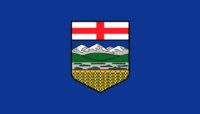
Net-Metering in Alberta
Alberta still has a few incentives going for solar PV. On top of that, Alberta has one of the best solar resources of the country; the southern prairie gets more sunshine than just about any other place in Canada! The Alberta Micro-Generation Regulation allows for annual net-metering of systems up to 5 MW.
City of Edmonton Change Homes for Climate PV Incentive
Those living in Edmonton are eligible for $0.50/Watt in rebates for installed solar PV on multi-residential buildings.
Town of Banff Solar Photovoltaic Production Incentive
Residents of the Town of Banff can apply for a rebate of $0.75/Watt for systems between 2 kW and 20 kW in solar PV. Both residential and commercial properties are eligible.
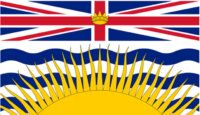
Net-Metering & BC Hydro
BC Hydro has annual net-metering for residential and commercial customers. Eligible customers must have a clean or renewable electricity generator connected to the BC hydro distribution system with an aggregate nameplate capacity no more than 100kW. For systems of 27 kW or less the “simple net-metering” process can be used, while larger systems have to go through the full, and more complex, process. If more energy is generated vs. used in a month the excess is shown as a credit on the electricity bill. If after 12 months there is a net credit (in other words, over a one-year period more electricity is produced than used) the excess is sold to BC Hydro at a rate that’s set based on the wholesale rate once a year (in other words, it varies from year to year) and the credits are set to zero again.
BC Regional District of Nanaimo Renewable Energy System Incentive $250
This program enables homeowners in RDN Electoral Areas and the District of Lantzville to save money while upgrading to energy efficient technology in their home. Homeowners that install a solar PV system are eligible to receive a $250 incentive. In addition, effective April 1, 2015, a $400 rebate is available for renewable energy systems that require and obtain a development variance permit.
BC PST Tax Exemption
The province of British Columbia has a provincial sales tax exemption for the following renewable energy system equipment: Solar photovoltaic collector panels, wiring, controllers, and devices that convert direct current into alternating current (inverters), when they are sold as part of a solar photovoltaic system. Solar thermal collector panels, wiring, pumps, tubing, and heat exchangers, when they are sold as part of, a system that includes solar thermal collector panels.
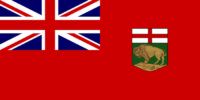
Manitoba Customer Owned Generation
Though it is one of the sunniest provinces of Canada, Manitoba does unfortunately NOT offer regular net-metering at this time. Customers who own their own electric renewable generation systems may connect to the distribution system. For small systems up to 10 kW the process is simple. The produced energy can be used to offset ones own use, and the excess is paid by Manitoba Hydro at a rate of $0.02403/kWh for systems up to 200 kW in size (at the time this was written that represents about half the cost for electricity purchased from the grid). For generators producing more than 200 kW, Manitoba Hydro will negotiate a Power Purchase Agreement (PPA) with the generator based on hours of operation, type, reliability, etc. Generation systems up to 10 MW are possible.
Manitoba Residential Earth Power Loan
The Residential Earth Power Loan is an option if you are looking to make energy efficiency upgrades to your home, including solar photovoltaic systems. The loan is applicable to residential, non-seasonal customers only. Your monthly payment will be added to your energy bill. The minimum allowable loan amount is $500, and the loan can go up to $30,000 for solar photovoltaic panels. Solar PV financing is calculated based on $3 per watt installed; the maximum term is 15 years; no down payment is required; the loan becomes due and payable when the house is sold; the loan is not transferable; and the annual interest rate is fixed at 4.8 per cent for the first 5 years.
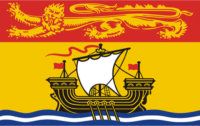
NB Power Net-Metering Program
The NB Power Net Metering program provides customers with the option to connect their own environmentally sustainable generation unit to NB Power’s distribution system. In order to qualify generators must produce electricity using a renewable energy resource that does not exceed 100 kW. There are also a number of NB Power technical requirements including using approved equipment, obtain an electrical wiring permit, as well as an inspection and approval by the New Brunswick Department of Public Safety. Any power exported to the grid is converted to credits, and credits reset to zero every March, essentially making this a form of annual net-metering.
The New Brunswick Total Home Energy Savings Program
For home owners there are incentives to improve energy efficiency, though the Total Home Energy Savings Program. This program pays between $0.20 and $0.30 per Watt of solar PV that is installed. It is important to note that this program pays for many other home energy efficiency improvements as well, not just for solar PV! In fact, having multiple improvements increases the rate that solar is paid out at.
New Brunswick Energy Smart Commercial Buildings Retrofit Program
The Energy Smart Commercial Buildings Retrofit Program provides financial incentives for energy efficiency upgrades in a commercial building. The program provides up to $3,300 for the energy audit evaluation. Additionally, the program offers a maximum of $100,000 towards the energy retrofitting project costs that result in measurable electricity savings, including solar photovoltaic systems. The Energy Smart Program outlines a number of requirements that your Energy Management Service Provider must meet in order to be eligible for the program. The implementation funding is on a ‘per gigajoule saved’ basis and is intended for projects that have not yet been started.
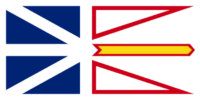
Newfoundland & Labrador Net-Metering
While not the sunniest province, the high electricity rates can still make solar PV an attractive option for Newfoundland and Labrador. NL Hydro offers annual net-metering that allows customers who own small renewable energy generators to back feed the grid with the electricity that they produce. This allows customers to reduce both their electricity bill as well as their carbon footprint. Generators must be approved by Hydro, and must not exceed 100 kW. The Net Metering Program will be available to residential and commercial customers who apply and meet the eligibility criteria. Excess monthly production is applied as a credit on the customer’s account, to be applied to future bills, and once a year left-over credits (if any) are paid out at the wholesale rate.

Northwest Territories Net-Metering
Northwest Territories Power Corporation and Northland Utilities both offer annual net-metering to their customers. The program is open to NWT residents with renewable energy generators up to 15 kW in size. Excess production is accounted for with credits on the customer’s account at full retail rate, and those can be used up at a later date. The credits reset to zero on March 31st every year, effectively making this annual net-metering.
Northwest Territories The Alternatives Energy Technology Program (AETP)
The Arctic Energy Aliance program is available to assist Northwest Territories residents and businesses to integrate clean energy technologies on their property, building, or other assets for the purpose of reducing fuel usage. AEA provides funding of up to half of the cost of qualified renewable energy systems with a maximum amount of $20,000 for home owners, and $50,000 for business, indigenous, and governments. Communities that receive their electricity from hydro-generation are NOT eligible. The program is also available to assist NWT commercial businesses including off-grid lodges and camps to integrate commercially available, clean energy technologies into their operations. The fund is intended to reduce fuel use and lower the cost of operations in remote locations where fuel prices and carbon footprints are high. Eligible technologies include: Photovoltaics, Wind turbines, solar hot water heating systems, solar air heating systems, ground source heat pumps, in stream and Micro Hydro, and more.
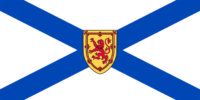
Nova Scotia Enhanced Net-Metering
Nova Scotia is currently the place to be for solar, offering both net-metering and an installation incentive! It has a great annual net-metering program, allowing for systems up to 100 kW in size, and any excess production appears as a credit on the customer’s bill. Credits can be used within one year, and if after that time there are still credits remaining they are paid out as a cash payment at full retail rate (though systems should be sized to cover annual use according to their rules).
Nova Scotia SolarHomes Rebate
Nove Scotia may not have the most sun, but it does have one of the best rebates in solar in Canada! The SolarHomes rebate is $0.60/Watt for eligible solar photovoltaic systems. For most systems, the rebate will equate to approximately 25% of the cost of the system. The maximum rebate is $6,000, or 25% of the eligible cost, whichever is less. The minimum system size needs to be 1 kW.

Nunavut Net-Metering
Nunavut may not be the sunniest of places, but it does have very high electricity prices that can make solar PV worthwhile! Despite the dark winters, the long days of summer actually make annual solar energy production clock in at a very reasonable 1,092 kWh per kW of solar PV per year (that’s only 200 kWh less than southern Ontario!). Nunavut offers annual net-metering, for solar systems up to 10 kW in size. Credits are carried forward and can be used up within a year. They reset to zero every March 31st.
Nunavut Home Renovation Program
To help pay for a solar system Nunavut offers the Home Renovation Program. This is a comprehensive assistance program offered by the Nunavut Housing Corporation. The program includes financial, program, and technical assistance for Nunavut residents wishing to carry our major repairs, renovations, and energy efficiency upgrades to their home.
The financial assistance comes in the form of a forgivable loan of up to $65,000 and an extra $15,000 for energy efficiency upgrades. The loan is offered on a 10 year time frame and is forgiven at 1.67% monthly beginning the first month of the fifth year, such that 20% of the loan is forgiven yearly from years 6 through 10.
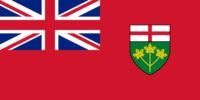
Ontario Net-Metering
Electricity consumers in Ontario may take advantage of the net-metering initiative with renewable energy generators up to 500kW or less. Net metering allows Ontarians to send excess electricity to the distribution system for a credit toward energy costs. Once you’re connected to the distribution system, your local distribution company will continue to read your meter just as they do now and then subtract the value of electricity you supply to the grid from the value of what you take from the grid. What you’ll see on your bill is the “net” difference between these two amounts. Credits can be used up within one year, any remaining credits after that are reset to zero (i.e. you give them away to the electrical company).
Important Notes:
Be advised that the rules make it much more difficult and expensive to connect systems over 10 kW to the grid. In particular for residential use 10 kW of solar PV (it is the inverter size that counts) should be considered the practical limit. In addition, many areas in Ontario are currently “grid constrained”. This means the (rather arbitrary) limit of 7% of renewable sources set by Hydro-One and other electrical providers has been reached for large areas of the electrical network, and no additional renewable energy systems will be allowed to connect to the grid in those areas.
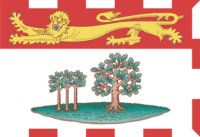
PEI Net-Metering
Prince Edward Island offers annual net-metering for residents through the Renewable Energy Act for systems up to 100 kW in size. Maritime Electric customers can find information on how to apply at this link. Overproduction is credited at the retail rate, and those credits can be used up in subsequent billing periods. Credits expire after 12 months, making this annual net-metering.
PEI Solar Rebate Program
If you live on PEI you’re lucky! One of the best rebate programs in Canada can be found right there! The Solar Electric Rebate Program pays $1.00/Watt for PV installations for homes, and $0.35/Watt for business, up to 40% of installed costs, to a maximum of $10,000. Systems have to be eligible for net-metering, which rules out off-grid use.
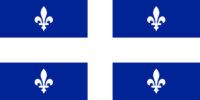
Hydro-Quebec Net-Metering
Despite the abundance of renewable energy production (most of Quebec’s electricity is truly generated via hydro power), this province is currently one of the best places to be for solar power! The Quebec net-metering option allows for renewable power generation, including solar, up to 20 kW for single-phase (most residential customers) and 50 kW for 3-phase. Overproduction is credit as kWh’s on the customer’s account, and the credits can be used up when production falls short. The credits reset after only 2 years. Unique in Canada!
Quebec Heating with Green Power
In Quebec financial assistance is available to home owners under the Heating with Green Power program for the replacement of fossil-fueled home heating systems and fossil-fueled water heater systems with systems that use electricity or other renewable sources of energy, including solar energy. This allows you to improve the energy efficiency of your home and also reduces your greenhouse gas emissions.

Saskatchewan Net-Metering Program
Saskatchewan is the sunniest place in Canada (for the south), a great place for solar! Not so great when it comes to incentives; Saskatchewan went from the best place for incentives to one of the worst. All that is really left is their Net Metering Program, offering residents the opportunity to generate their own power through the use of renewable energy technology. Residents, farms and businesses can apply for systems of up to 100 kW of generating capacity (they count the DC side, so that is the total solar panel peak-power). Electricity sent to the grid is banked and applied to your current month’s electricity consumption. Any excess electricity exported to the grid is converted to credits at 7.5 ct/kWh, that are carried forward to future months/bills. There is no time limit on those credits, they stay valid until the account is closed.
Saskatchewan Solar or Wind-powered Water Pump Grant for Farms
Bringing power lines out to remote wells or streams can be costly. Solar or wind-powered water pumps can offer an economical, safe, reliable and environmentally friendly alternative. SaskPower offers a grant of 50% of costs above $500, to a maximum of $500, toward the purchase and installation of a complete solar or wind-powered water pumping system for farm livestock watering facilities.
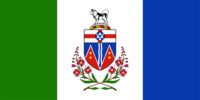
Yukon Micro-Generation Program
Micro-generation in the Yukon Territory refers to the small-scale generation of electricity (depending on location the size limit is between 5 kW and 50 kW). It is not quite net-metering, but comes close since it allows offsetting ones energy use and pays for overproduction at decent rates. It can be used to supplement power from the grid or as an alternative source of energy. Where system size allows, surplus generation is exported to the grid for annual reimbursement, and up to 65% of modelled consumption is allowed. Rates are not published (that we can find), talk to your electrical provider for those.
Yukon Rural Electrification and Telecommunications Program
If you live outside of municipal boundaries you may be eligible for the Rural Electrification and Telecommunications Program. This program offers rural Yukoners an affordable and convenient way to have electrical or telephone service extended to their home where it might not otherwise be practical or possible. Eligible projects include single-site connections, group-installations, and alternate energy systems for private use. Not applicable to properties within Carmacks, Dawson City, Faro, Haines Junction, Mayo, Teslin, Watson Lake and Whitehorse.
Yukon Good Energy Residential Incentives Program
The Goods Energy Residential Incentives Program new program offers an incentive to reduce the costs of installing residential renewable energy system to generate electricity. This includes solar photovoltaic, wind, hydro, biomass or geothermal energy systems. The program offers an $0.80 per Watt rebate up to a maximum of $5,000 per system per year. For solar systems the size limit is up to 50 kW or the smaller of what the local electrical utility will allow.





